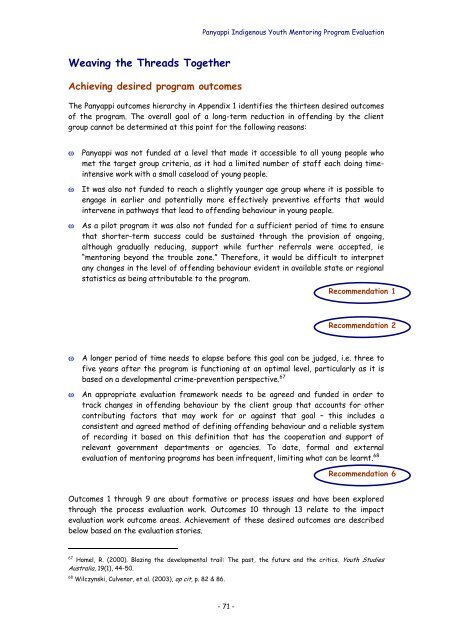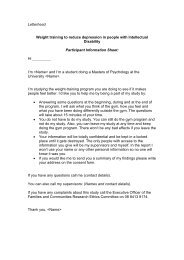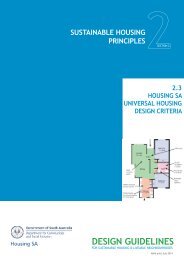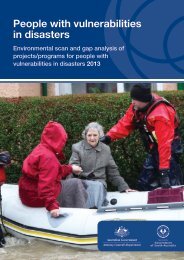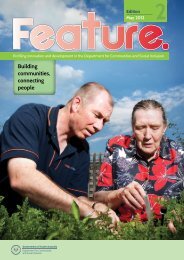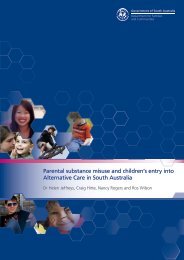Panyappi Indigenous Youth Mentoring Program Evaluation
Panyappi Indigenous Youth Mentoring Program Evaluation
Panyappi Indigenous Youth Mentoring Program Evaluation
You also want an ePaper? Increase the reach of your titles
YUMPU automatically turns print PDFs into web optimized ePapers that Google loves.
Weaving the Threads Together<br />
Achieving desired program outcomes<br />
<strong>Panyappi</strong> <strong>Indigenous</strong> <strong>Youth</strong> <strong>Mentoring</strong> <strong>Program</strong> <strong>Evaluation</strong><br />
The <strong>Panyappi</strong> outcomes hierarchy in Appendix 1 identifies the thirteen desired outcomes<br />
of the program. The overall goal of a long-term reduction in offending by the client<br />
group cannot be determined at this point for the following reasons:<br />
ω<br />
ω<br />
ω<br />
ω<br />
ω<br />
<strong>Panyappi</strong> was not funded at a level that made it accessible to all young people who<br />
met the target group criteria, as it had a limited number of staff each doing timeintensive<br />
work with a small caseload of young people.<br />
It was also not funded to reach a slightly younger age group where it is possible to<br />
engage in earlier and potentially more effectively preventive efforts that would<br />
intervene in pathways that lead to offending behaviour in young people.<br />
As a pilot program it was also not funded for a sufficient period of time to ensure<br />
that shorter-term success could be sustained through the provision of ongoing,<br />
although gradually reducing, support while further referrals were accepted, ie<br />
“mentoring beyond the trouble zone.” Therefore, it would be difficult to interpret<br />
any changes in the level of offending behaviour evident in available state or regional<br />
statistics as being attributable to the program.<br />
Recommendation 1<br />
Recommendation 2<br />
A longer period of time needs to elapse before this goal can be judged, i.e. three to<br />
five years after the program is functioning at an optimal level, particularly as it is<br />
based on a developmental crime-prevention perspective. 67<br />
An appropriate evaluation framework needs to be agreed and funded in order to<br />
track changes in offending behaviour by the client group that accounts for other<br />
contributing factors that may work for or against that goal – this includes a<br />
consistent and agreed method of defining offending behaviour and a reliable system<br />
of recording it based on this definition that has the cooperation and support of<br />
relevant government departments or agencies. To date, formal and external<br />
evaluation of mentoring programs has been infrequent, limiting what can be learnt. 68<br />
Recommendation 6<br />
Outcomes 1 through 9 are about formative or process issues and have been explored<br />
through the process evaluation work. Outcomes 10 through 13 relate to the impact<br />
evaluation work outcome areas. Achievement of these desired outcomes are described<br />
below based on the evaluation stories.<br />
67 Homel, R. (2000). Blazing the developmental trail: The past, the future and the critics. <strong>Youth</strong> Studies<br />
Australia, 19(1), 44-50.<br />
68 Wilczynski, Culvenor, et al. (2003), op cit, p. 82 & 86.<br />
- 71 -


